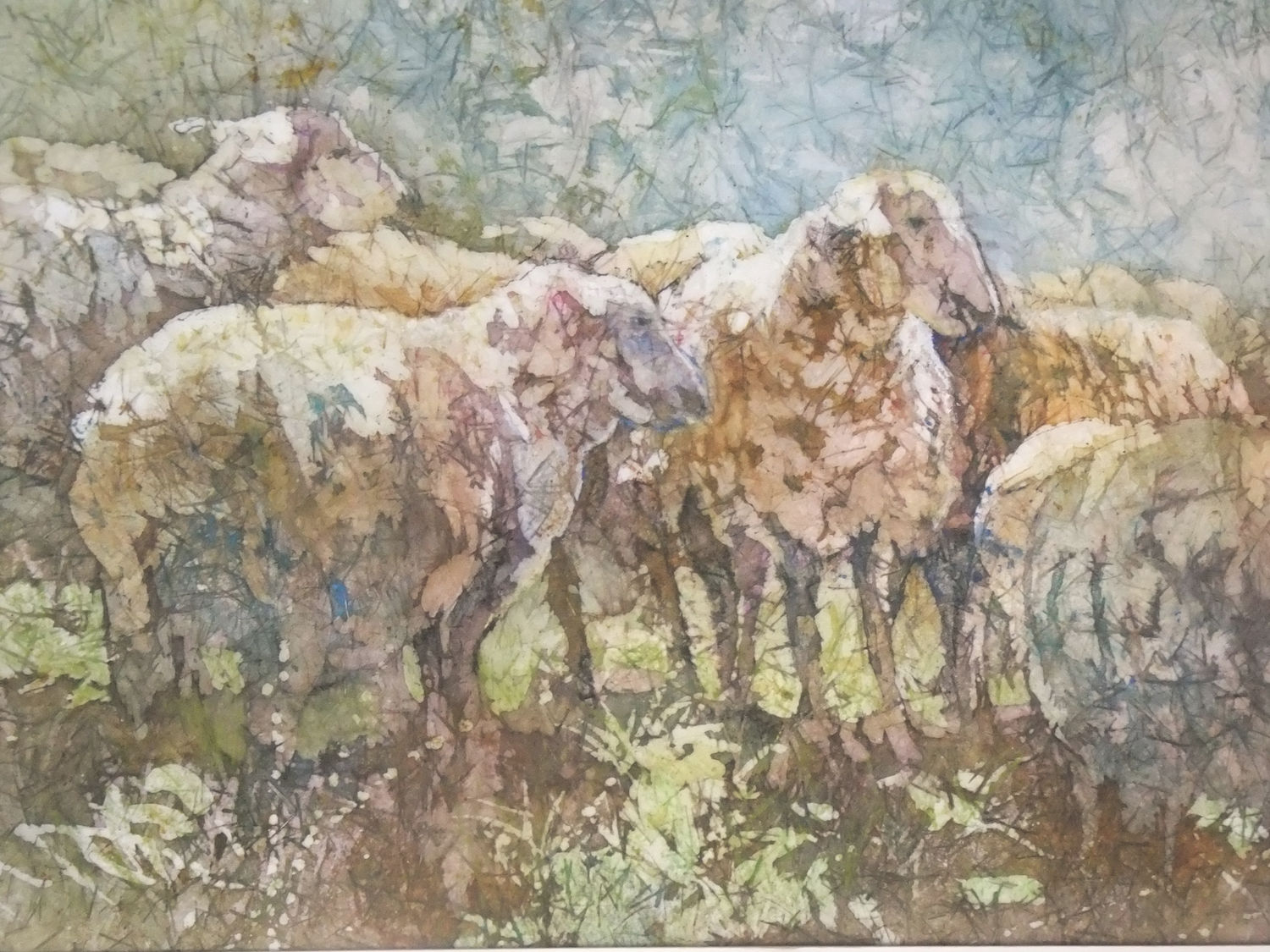Turn Simple Shapes Into Stunning Works of Art

Whether basic or complex, shapes are an essential component of most successful artworks. And, when it comes to painting in watercolor, this is no different.
Below, artist Kathie George shares how to loosen up your painting style with simple techniques for creating better forms. Enjoy!

Getting in Shape
Shapes make up one of the seven elements of art that serve as the foundation for strong design. But what makes good shapes? According to one of my all-time favorite watercolor teachers, Edgar Whitney, a good shape features the following two distinctions:
1. Two different dimensions. This simply means that one side is longer than the other — taller than it is wide or wider than it is tall.
2. Variation at the edge. By making the edge interesting, whether it’s rough to smooth or curved to straight, for example, it keeps the viewer’s eye engaged.
Follow along as I share several quick and easy solutions for manipulating shapes that result in more interesting forms, and the secret to creating more dynamic paintings that feature fewer — and looser— brushstrokes.
Shape Shifting
Basic shapes have their uses; after all, they’re the building blocks for all other shapes. But do we really want the shapes we use to remain static? Here are four ways to make basic shapes (such as those in blue) more dynamic.

1. Alter them.

2. Overlap them.

3. Connect them to form one shape.

4. Hide or cover part of them.

Towing the Line
Everything you paint is a shape, so learning to make them dynamic is important. Focus your attention on the edge — the silhouette — not the interior. Instead of seeing individual items — flower, vase, wall — observe the overall shapes.
Below are two examples of how to draw shapes from real objects. First up, is a picture of potted flowers in front of a building. I viewed the flowers and pot as one flat object and just concentrated on the silhouette. I adapted what I viewed, and I didn’t focus on all of the interior details. I’ll just fill those in as I draw or paint.


For this image of flowers in a vase, I combined objects in this still life setup to create a more unified composition


Painting Great Shapes
Now that you know how to draw better shapes, the way you paint them can also help to improve your painting skills. If you want to loosen up your painting style, this is a good way to get there.
When static shapes (below) are used in a work, artists tend to tighten up their strokes because they’re trying to stay within the lines.

This new shape (below) is now a combination of the original two. While it’s not the best, it’s still much more interesting than either shape alone. I’ve painted it in a looser manner, just letting the color slap onto the paper.

It’s a bit messy, but that won’t be obvious once it becomes part of the painting. There are times when this style won’t work, but most of the time, it does — as in the house example, pictured below.
The house on the left is painted tightly, emphasizing sharp lines and detail. The house on the right is done in a much looser style, resulting in a more interesting interpretation.

Always begin with the large shapes, combining them into one where possible, and then add detail for clarity. In this painting, below, the “mish-mash” of the boats, tarps and cargo in the left background are all simplified by combining them into one larger shape.
The same is true with the white boats on the right. These large shapes are then “turned into” boats by shading them with bits of color and adding detail. By painting with loose brushstrokes, great color and the “feel” of the object, background detail isn’t necessary.

A version of this article first appeared in a past issue of Watercolor Artist magazine. Click here to subscribe so you never miss out on the latest issue.
And, be sure to check out Kathie George’s website for more of her work and art tips.





Very instructive and helpful, thank you Mackenzie. Moira